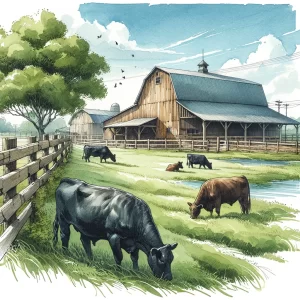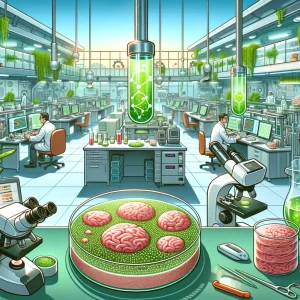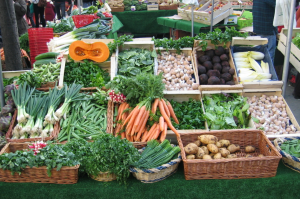
What is Cultivated Meat?
Cultivated meat, sometimes called cultured or lab-grown meat, is one of the most talked-about innovations in the growing field of cellular agriculture. Unlike plant-based alternatives that mimic meat with soy or pea protein, cultivated meat is grown directly from animal cells. The goal is to provide real meat without the ethical, environmental, and resource costs of conventional livestock farming.
Cellular agriculture is a broad field that produces food either by growing cells directly (cellular products like cultivated meat or mycoprotein) or by using cells to produce specific compounds (acellular products like proteins or fats from precision fermentation). Mycoprotein products, such as Quorn, have been available for decades, but cultivated meat is still emerging and faces regulatory, economic, and technological hurdles.
Why It Matters
Traditional meat production is a significant contributor to greenhouse gas emissions, deforestation, water consumption, and pollution. Life cycle assessments (LCAs) suggest cultivated meat has far lower land use and emissions compared to beef, the most environmentally damaging meat, but results are more mixed when compared to poultry, which is already efficient to produce.
Energy use is a sticking point: cultivated meat requires electricity to maintain controlled growth environments that animals naturally provide. Moving to renewable energy, improving bioreactor design, and cheaper growth media could help narrow that gap.
Cultivated meat also promises animal welfare benefits by reducing the need for slaughter, and it offers the possibility of greater control over food safety and nutrition. Still, production is costly, and most current products remain at pilot or limited commercial scale.
Key Challenges
Scaling up is the biggest barrier. Today’s global bioreactor capacity for mammalian cell culture is just a fraction of what would be needed to meet even 1% of meat demand. Equipment must be redesigned for food, not pharmaceuticals, and the growth medium rich in amino acids and proteins remains too expensive. Researchers are exploring cheaper inputs, recycling strategies, and edible scaffolds (plant-based or fungal materials) that help cells grow into textures resembling real meat. These scaffolds not only influence the structure but also the taste and nutrition of the final product.
Benchmarking cultivated meat against traditional meat is another frontier. Scientists are building measurable standards for qualities like texture, bite, and juiciness to ensure cultivated products meet consumer expectations.
The Road Ahead
Policy and regulation will shape how quickly cultivated meat reaches markets. In the EU, products must pass safety reviews as “novel foods,” and there is debate over whether sustainability should also be formally assessed. Critics worry about the displacement of farmers, but many experts envision a complementary system, where cellular agriculture coexists with traditional farming.
While cultivated steaks are still years away, hybrid products, like plant-based foods enhanced with cultivated fat or protein, are already being sold. Experts caution that cultivated meat won’t be a silver bullet, but as global food demand rises and natural resources decline, cellular agriculture could become a critical tool in building a more sustainable, ethical, and resilient food system.
For more information, be sure to follow the fine folks over at World Animal Protection.



